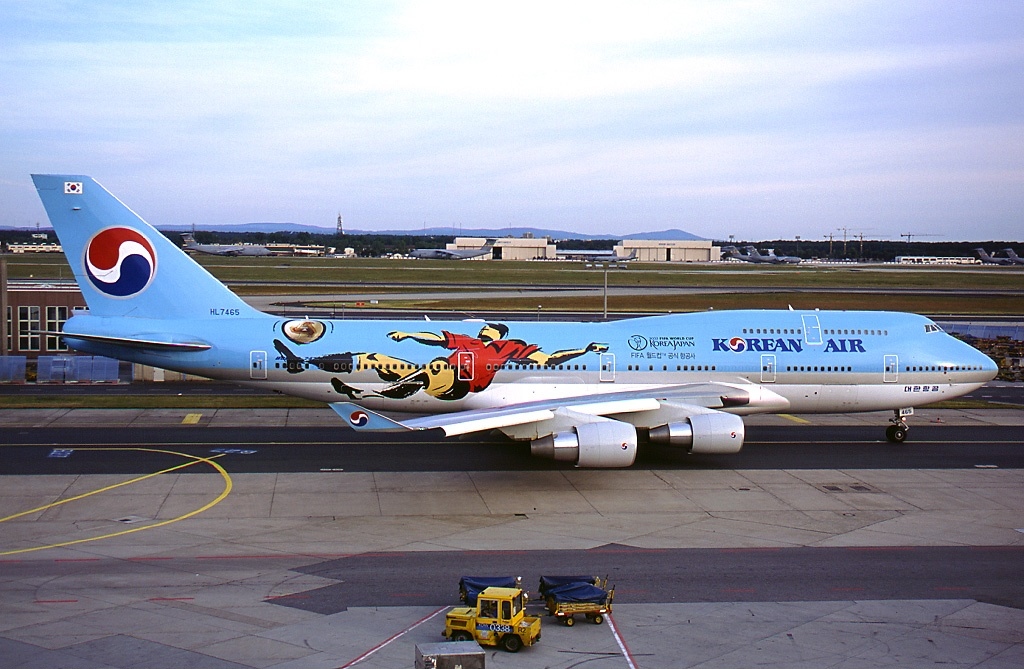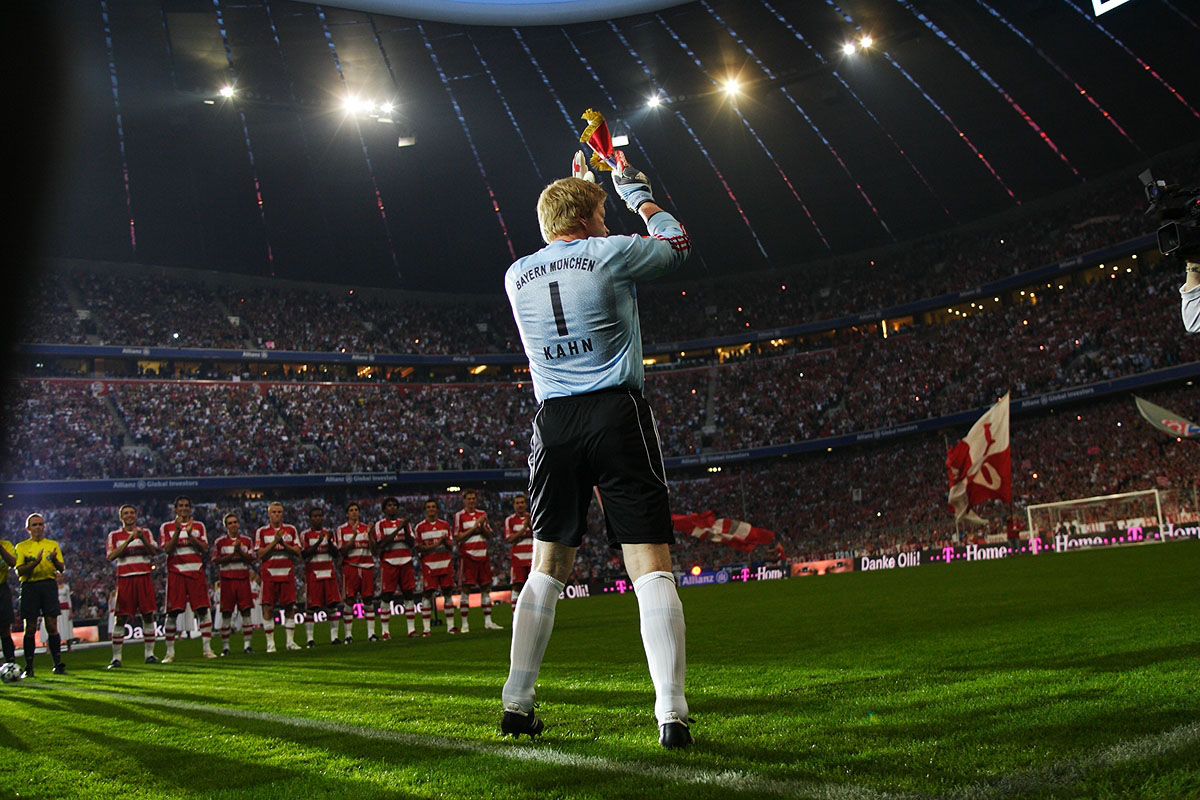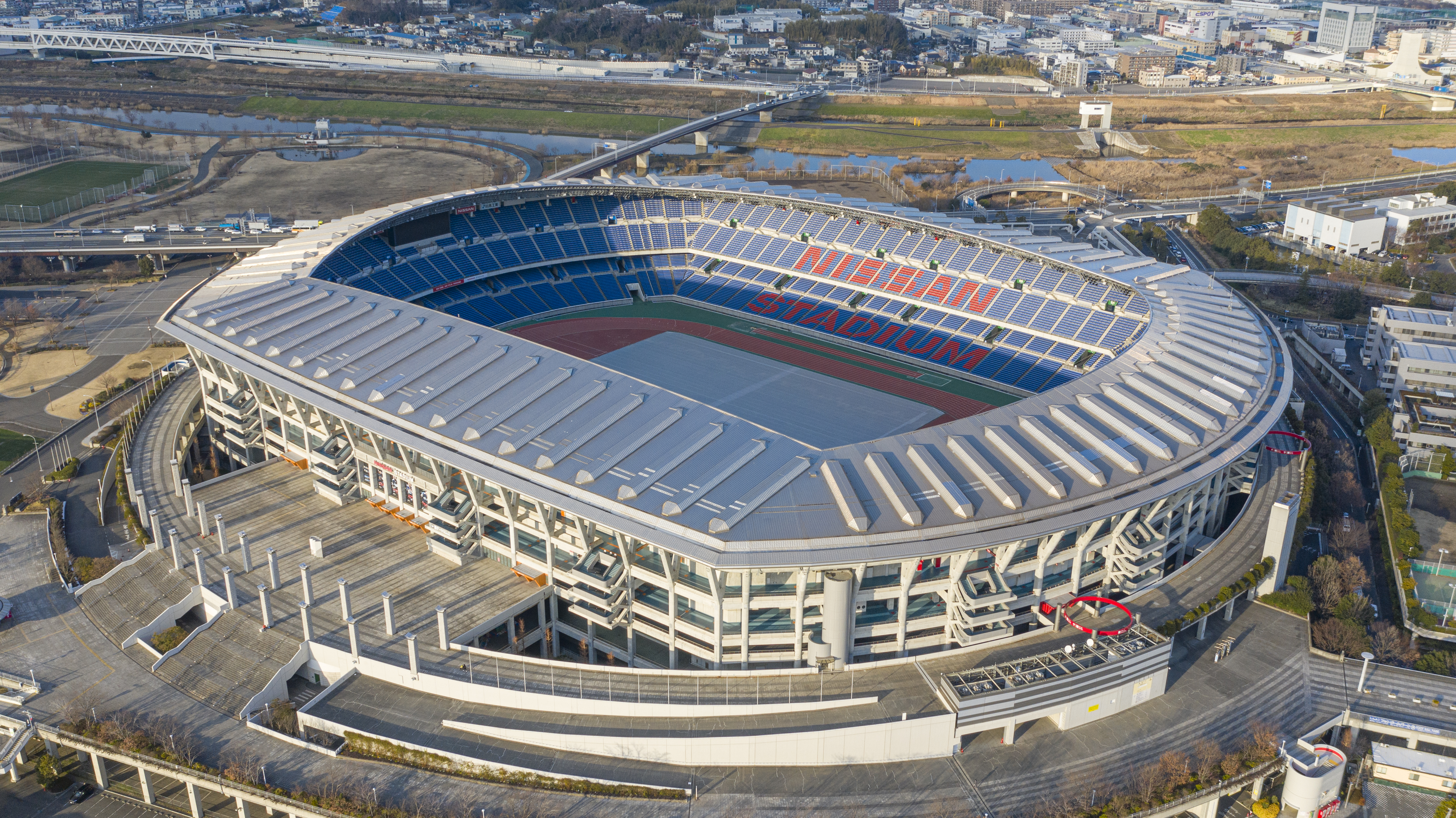|
2002 FIFA World Cup Knockout Stage
At the 2002 FIFA World Cup, the knockout stage was the second and final stage of the tournament, following the group stage. The top two teams from each group (16 total) advance to the knockout stage to compete in a single-elimination style tournament. A third place match is included and played between the two losing teams of the semi-finals. Note: Match kickoff times are given in local (South Korea and Japan) time; this is KST and JST (UTC+9) during summer time. Qualified teams The top two placed teams from each of the eight groups qualified for the knockout stage. Bracket Round of 16 Germany vs Paraguay Two minutes from the end of regulation time, Oliver Kahn sent a goal kick down the field, which was received by Michael Ballack. Ballack passed to Bernd Schneider whose cross was turned in by Oliver Neuville. In the 92nd minute, Roberto Acuña was sent off after punching Ballack. Denmark vs England After five minutes, David Beckham launched a corner towards Rio Ferd ... [...More Info...] [...Related Items...] OR: [Wikipedia] [Google] [Baidu] |
2002 FIFA World Cup
The 2002 FIFA World Cup, also branded as Korea Japan 2002, was the 17th FIFA World Cup, the quadrennial Association football, football world championship for List of men's national association football teams, men's national teams organized by FIFA. It was held from 31 May to 30 June 2002 at sites in South Korea and Japan, with its 2002 FIFA World Cup Final, final match hosted by Japan at Nissan Stadium (Yokohama), International Stadium in Yokohama. A field of 32 teams qualified for this World Cup, which was the first to be held in Asia, the first to be held outside of the Americas or Europe, as well as the first to be jointly-hosted by more than one nation. China national football team, China, Ecuador national football team, Ecuador, Senegal national football team, Senegal, and Slovenia national football team, Slovenia made their World Cup debuts. The tournament had several upsets and surprise results, which included the defending champions France national football team, Franc ... [...More Info...] [...Related Items...] OR: [Wikipedia] [Google] [Baidu] |
Misaki Park Stadium
The , also known as The , is a football stadium in Misaki Park, Hyogo-ku, Kobe, Japan. The stadium has a capacity of 30,132. This stadium, which features a retractable roof, is the home ground of J1 League club Vissel Kobe and the rugby union Japan Rugby League One team Kobelco Kobe Steelers. In 1970, was opened at the site of the Kobe Keirin Track. It was the first football stadium in Japan to be able to host games at night following the installation of night lighting. 2002 FIFA World Cup In order to host the 2002 FIFA World Cup, the stadium was renovated to install a removable roof and increase spectator capacity. It was opened under the name Kobe Wing Stadium in November 2001 with a capacity of 42,000. Reopened in 2003 with a reduced capacity of 32,000 Kobe Wing Stadium became the home of the Vissel Kobe football club. 2019 Rugby World Cup The stadium has been announced as one of the venues for 2019 Rugby World Cup which will be the first Rugby World Cup The Rug ... [...More Info...] [...Related Items...] OR: [Wikipedia] [Google] [Baidu] |
Bernd Schneider (footballer)
Bernd Schneider (born 17 November 1973) is a German former footballer. He was mainly a midfielder but could play anywhere on the left and right flanks. After retiring in June 2009, he took up an advisory role at his first club, Carl Zeiss Jena, and a scouting position at Bayer Leverkusen. Nicknamed Schnix by fans and teammates, Schneider started out at his hometown club Carl Zeiss Jena and made a name for himself during his decade-long stint at Bayer Leverkusen. He earned the nickname "The White Brazilian" for his dribbling and passing skills as well as his accurate free kicks and corners. Although mostly a provider of goals rather than a finisher, he was capable of scoring, especially from long distance. Schneider is notable for having multiple second and third place medals from national, continental and international tournaments (including the Bundesliga, UEFA Champions League and FIFA World Cup) without having ever having won a major tournament. Club career Schneider star ... [...More Info...] [...Related Items...] OR: [Wikipedia] [Google] [Baidu] |
Michael Ballack
Michael Ballack (; born 26 September 1976) is a German former professional footballer. He is among the top goal scorers in the history of the German national team. Ballack wore the number 13 shirt for every team he has played for, except 1. FC Kaiserslautern. He was selected by Pelé as one of FIFA's 100 Greatest Living Players, and as the UEFA Club Midfielder of the Year in 2002. He won the German Footballer of the Year award three times – in 2002, 2003 and 2005. Ballack was known for his passing range, powerful shot, physical strength and commanding presence in midfield. Ballack began his career as a youth at enterprise sports community BSG Motor "Fritz Heckert" Karl-Marx-Stadt in 1983. He then joined the youth department of football club FC Karl-Marx-Stadt. Ballack made his debut for Germany's under-21 side on 26 March 1996. Although the team were relegated in his first season, his performances in the Regionalliga the following season led to a transfer to 1. FC Kaisersl ... [...More Info...] [...Related Items...] OR: [Wikipedia] [Google] [Baidu] |
Oliver Kahn
Oliver Rolf Kahn (; born 15 June 1969) is a German football executive and former professional player who played as a goalkeeper. He started his career in the Karlsruher SC Junior team in 1975. Twelve years later, Kahn made his debut match in the professional squad. In 1994, he was transferred to Bayern Munich for the fee of DM 4.6 million, where he played until the end of his career in 2008. He is regarded as one of the greatest and most successful goalkeepers of all-time. His commanding presence in goal and aggressive style earned him nicknames such as ''Der Titan'' (, "The Titan") from the press and ''Vol-kahn-o'' ("volcano") from fans. Kahn is one of the most successful German players in recent history, having won eight Bundesliga titles, six DFB-Pokals, the UEFA Cup in 1996, the UEFA Champions League and the Intercontinental Cup, both achieved in 2001. Regarded as one of the greatest goalkeepers of all time, his individual contributions have earned him a record fou ... [...More Info...] [...Related Items...] OR: [Wikipedia] [Google] [Baidu] |
Daegu Stadium
Daegu Stadium, also known as the Blue Arc, is a multi-purpose sports stadium located in Daegu, South Korea. It was formerly named Daegu World Cup Stadium but was changed to Daegu Stadium on 5 March 2008. It has a seating capacity for 66,422 people, and parking for 3,550 cars. It is located approximately 11 kilometers or 20 minutes by car from Daegu Airport. It is managed by the Daegu Sports Facilities Management Center. It was one of the host venues of the 2002 FIFA World Cup and the main stadium for the 2003 Summer Universiade and the 2011 World Championships in Athletics. It was the home stadium of Daegu FC until 2018. Construction The construction was completed in May 2001 at a cost of 265,000,000 USD. The roof was engineered by the international consultancy WS Atkins. The roof is in two sections, each with an inclined trussed steel arch spanning 273 m for a rise of only 28.7 m, and propped by 13 secondary arches off a perimeter second "arch" that is supported by rak ... [...More Info...] [...Related Items...] OR: [Wikipedia] [Google] [Baidu] |
International Stadium Yokohama
, also known as , is a multi-purpose stadium in Yokohama, Kanagawa Prefecture, Japan, which opened in March 1998. It is the home stadium of Yokohama F. Marinos of the J1 League. International Stadium Yokohama had the highest seating capacity of any stadium in Japan for 21 years, with a total of 75,000 seats, up until the New National Stadium in Tokyo was opened in November 2019. It hosted three group stage games during the 2002 FIFA World Cup, and the final game between Germany and Brazil was played there on 30 June 2002. The stadium was one of the football venues for the 2020 Summer Olympics. The stadium was a venue for the 2019 Rugby World Cup and eventually hosted the final of the tournament after the originally selected host, National Stadium was unable to be constructed in time. On 28 August 2009, Nissan Motors announced that they would not renew the contract for the naming rights of the stadium, which expired on 28 February 2010. But negotiations continued with the ... [...More Info...] [...Related Items...] OR: [Wikipedia] [Google] [Baidu] |
Saitama Stadium 2002
, often called or simply , is a football stadium located in Midori-ku, Saitama, Saitama Prefecture, Japan. Currently, J1 League club Urawa Red Diamonds use this stadium for home games. It is the largest football-specific stadium in Japan and is one of the largest stadiums in Asia. It has hosted the semi-finals of both the 2002 FIFA World Cup and the football tournament at the 2020 Summer Olympics. It is also the home stadium of Japan national football team in almost every FIFA World Cup qualifying matches. Location The stadium is a 15 to 20 minute walk from Urawa-Misono Station on the Saitama Railway Line. History Built by Azusa Sekkei to host matches of the 2002 FIFA World Cup, construction was completed in September 2001. The stadium holds 63,700 people, although for segregation reasons league games hosted at the ground have a reduced capacity of 62,300. The Saitama Stadium hosted four matches during the 2002 FIFA World Cup, including co-host Japan's first match aga ... [...More Info...] [...Related Items...] OR: [Wikipedia] [Google] [Baidu] |
Seoul World Cup Stadium
The Seoul World Cup Stadium (), also known as Sangam Stadium, is a stadium used mostly for association football matches. The venue is located in 240, World Cup-ro, Mapo-gu, Seoul, South Korea. It was built for the 2002 FIFA World Cup and opened on November 10, 2001. It is currently the second largest stadium in South Korea after Seoul Olympic Stadium, and is the 2nd largest rectangular stadium in Asia. It was designed to represent the image of a traditional Korean kite. The stadium has a capacity of 66,704 seats, including 816 seats for VIP, 754 seats for press and 75 private Sky Box rooms, each with a capacity for 12 to 29 persons. Due to table seats installation, capacity was reduced from 66,806 seats to 66,704 seats in February 2014. Since the World Cup it has been managed by the Seoul Metropolitan Facilities Management Corporation (SMFMC). FC Seoul moved to the Seoul World Cup Stadium in 2004. Design The Seoul World Cup Stadium, the 2nd largest football-specific stadiu ... [...More Info...] [...Related Items...] OR: [Wikipedia] [Google] [Baidu] |
Nagai Stadium
, known as the Yanmar Stadium Nagai ( ja, ヤンマースタジアム長居) for sponsorship reasons, is a stadium in Osaka, Japan. It is the home ground of J. League club Cerezo Osaka. The stadium has a seating capacity of 47,000. History When Nagai Stadium initially opened in 1964, its capacity was 23,000, and its opening event was a football match during the 1964 Summer Olympics. The stadium's seating capacity was expanded to 50,000 in 1996 for the 52nd National Sports Festival of Japan in 1997. The stadium hosted three matches in the 2002 FIFA World Cup. Nagai Stadium has been used many times for athletic competitions; it played host to the Athletics at the 2001 East Asian Games and the 2007 World Championships in Athletics. It is also the venue for the annual Osaka Grand Prix athletics meeting which took place every May from 1996 to 2010, and again since 2018. In addition, the stadium is the starting and finishing point for the Osaka International Ladies Marathon, held a ... [...More Info...] [...Related Items...] OR: [Wikipedia] [Google] [Baidu] |
Shizuoka Stadium
is a sports stadium used primarily for football. The stadium is in Fukuroi City, Shizuoka Prefecture, Japan, although the stadium itself is merely the centrepiece of the larger Ogasayama Sports Park which extends into neighbouring Kakegawa. The stadium's capacity is 50,889. It is now the primary venue for major sporting events in Shizuoka Prefecture, including track and field, for which it is fully equipped. Usage Shizuoka Stadium opened in 2001 and hosted its first major event on May 12th 2001, which was the Shizuoka Derby J. League match between Shimizu S-Pulse and Júbilo Iwata. A record crowd of 52,959 saw an extra time 1-0 victory for Shimizu. Ecopa continues to be the venue for Júbilo Iwata's more high-profile games, including the Shizuoka Derby. Shimizu S-Pulse have not used the stadium for a home league since 2015. In recent years Ecopa has also been home to one semifinal match of the Emperor's Cup, sharing the duty with the Kasumigaoka in Tokyo, although du ... [...More Info...] [...Related Items...] OR: [Wikipedia] [Google] [Baidu] |
Gwangju World Cup Stadium
The Gwangju World Cup Stadium is a multi-purpose stadium in the South Korean city of Gwangju. It is managed by the Sports Support Division of the Culture & Sports Policy Office of the Gwangju Metropolitan city. Initially the stadium was named ''Gwangju World Cup Stadium'' to host some matches of the 2002 FIFA World Cup. To honour the former South Korean national team coach Guus Hiddink, who helped the team advance to the semi-finals, for the first time in its history, by defeating Spain in this stadium, they have also named it the ''Guus Hiddink Stadium''. It is the home stadium of Gwangju FC of the Korea Professional Football League (K League) and has a capacity of 40,245. It was also the venue for the 3rd Asia Song Festival, organised by ''Korea Foundation for International Culture Exchange'', in 2006.KOFIC3rd Asia Song Festival 22 September 2006. Retrieved 12 October 2011 It was also the main venue for 2015 Summer Universiade ) , Nations participating = 143 , Athletes partic ... [...More Info...] [...Related Items...] OR: [Wikipedia] [Google] [Baidu] |



